Related Research Articles
The SJ-1 Head Skinner was a single-seat, gull-wing sports plane built in the US by brothers Earl and Jerry Adkisson of Tuscola, Illinois in 1957.
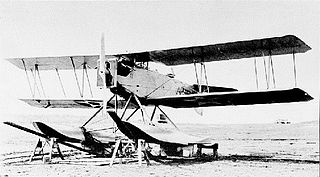
The Aeromarine AS was a seaplane fighter aircraft evaluated by the US Navy in the early 1920s.
The Aeronca Model 9 Arrow was a low-wing all-metal cabin monoplane with retractable landing gear. It was marketed to returning pilots from World War II and unveiled in 1947 but never went into production.

The Bartlett LC-13A Zephyr 150 was a United States light civil aircraft built in the 1940s. It was a mid-wing braced monoplane of conventional design with side-by-side seating for two and fixed, tailwheel undercarriage. It was originally marketed as the Babcock LC-13 by its original manufacturer, then as the Taubman LC-13 when the Babcock Airplane Corporation was acquired by Taubman Aircraft. The rights were finally acquired by Bartlett Aircraft in 1941, but plans to mass-produce it were halted by the outbreak of World War II. There was a brief attempt to revive the design at the end of the war, but nothing came of this.

The International F-17 Sportsman was a 1920s American three-seat open-cockpit biplane designed and manufactured by the International Aircraft Corporation in Long Beach, California and Cincinnati, Ohio. 107 aircraft were built, 77 of them at Cincinnati.

The Luscombe Phantom was a 1930s American two-seat cabin monoplane and the first product of the Luscombe Aircraft Engineering Company.
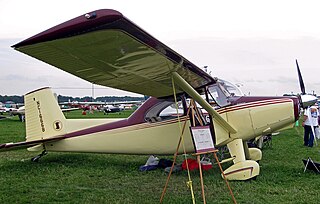
The Luscombe 11 Sedan is a civil utility aircraft produced in the United States in the late 1940s.
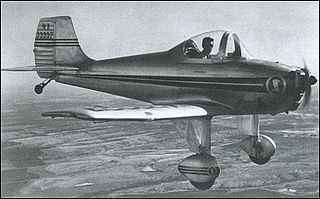
The Luscombe 10 was a single-seat sport aircraft built in the United States in 1945. It was a conventional, low-wing cantilever monoplane with fixed, tailwheel landing gear, designed for aerobatics. The wings, tail unit, and engine section were all adapted from the Luscombe 8, while the fuselage center section was an all-new design, relocating the Model 8's wings from a high to low position.

The Monocoupe 110 Special was a United States sporting and racing aircraft of the 1930s and 1940s.
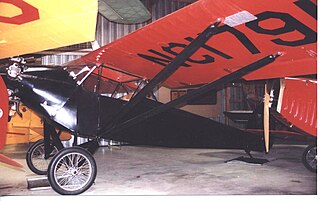
The Mono Aircraft Monoprep was an American light civil sporting monoplane of the late 1920s.
The Waco 6, designed by the Advance Aircraft Company, was a 2-seat biplane similar to the Curtiss JN-4, with single bay equi-span wings. The fuselage was built from wood, fabric covered, with tandem cockpits, the forward one between the mainplanes. Four aircraft were built ca. 1923.
The H-1 Doodle Bug is a single place homebuilt aircraft designed in the 1950s by Continental Airlines DC-6 pilot Lawrence K. Heuberger.

The Kreider-Reisner Midget was an American light racing monoplane, the first aircraft designed by the Kreider-Reisner Aircraft Company of Hagerstown, Maryland.

The Elias EC-1 Aircoupe was an American two-seat parasol wing monoplane designed and built by Elias of Buffalo, New York.
The Albar Albarian is an American aircraft designed for homebuilt construction.
The Sawyer Skyjacker II is an American homebuilt aircraft that was designed and produced by Ralph V. Sawyer of Lancaster, California, in 1974. The aircraft was intended as a research project and as such only one was built.
The Williams-Cangie WC-1 Sundancer is an American homebuilt biplane racing aircraft that was designed by Art Williams and Carl Cangie and built by Ralph Thenhaus in 1974. Plans were at one time available from Williams' company, the Williams Aircraft Design Co of Northridge, California. Only one was built.
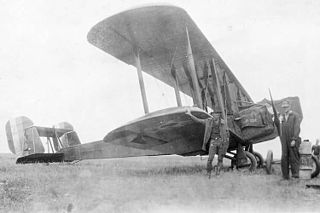
The Curtiss Model 36 XNBS-4 was a 1920s prototype biplane night bomber built by the Curtiss Aeroplane and Motor Company for the United States Army Air Corps.

The Sikorsky S-33 Messenger was an American two-seat sesqiuplane designed and built by the Sikorsky Manufacturing Corporation in 1925.
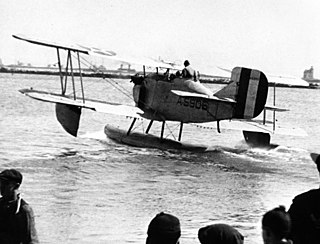
G Elias & Brother was and American manufacturer of cabinets and aircraft based in Buffalo, New York in the 1920s. A.G. Elias sat on the Manufacturers Aircraft Association's board of directors along with President Frank H. Russell, VP Glenn L. Martin, Charles L. Laurence, Chance M. Vought, S.S. Bradley, George P. Tidmarsh, and Donald Douglas. E.J Elias promoted the construction of a Buffalo municipal airport to aid the local fledgling airplane industry of five aviation companies constructing airplanes and airplane parts. From 1920 to 1925, Elias company's chief engineer, David Earle Dunlap (1896-1957), designed the Elias EM-2 Expeditionary planes. He designed the NBS-3 bomber fuselage and the Elias M-1 Mail plane. Dunlap's Elias TA-1 design was the first United States Army Air Corps Trainer to have a radial engine. After tests a McCook Field, the Army Air Corps selected other manufacturers over the Elias bomber and trainer. The company designed the Elias EM-1 to meet requirements for a multirole amphibian marine expeditionary aircraft. Elias delivered six production Elias EM-2 aircraft with Liberty engines to the United States Navy in 1922.
References
- ↑ Eckland, E.O. "Luscombe". Aerofiles. Retrieved 24 October 2014.